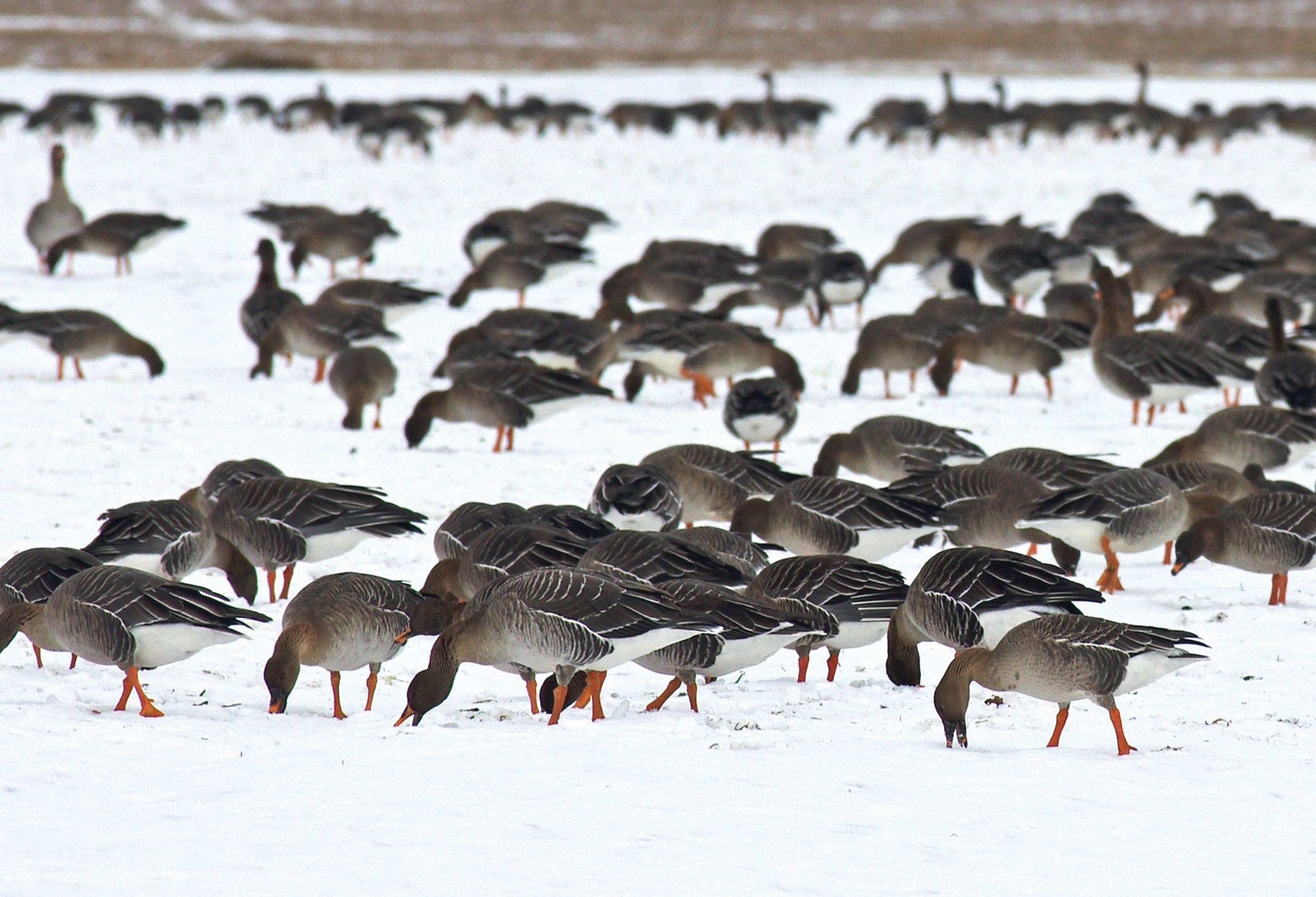Fältval hos höstrastande och övervintrande gäss i sydvästra Sverige 1977/1978–2011/2012
DOI:
https://doi.org/10.34080/os.v23.22581Nyckelord:
Anatidae, populationsstudier, vinterekologi, inventering, rastplatserAbstract
Goose counts have been made in September, October, November and January since September 1977. Staging Greylag Geese Anser anser increased from 19,000 in 1984 to 250,000 in 2008–2010, mainly due to a corresponding population growth, and a wintering tradition was established with a maximum of 50,000 in 2008. Staging and wintering White-fronted Geese Anser albifrons increased from less than 3,000 to up to 40,000 and 25,000, respectively, due to a northward shift of the sites. Wintering Canada Geese Branta canadensis increased from less than 10,000 to a peak of 70,000 in 2009–2010, mainly an effect of the growing Swedish population. Staging of the Barnacle Goose Branta leucopsis is a new tradition established in autumn 2,000, with no less than 150,000 in 2011. Sweden is the autumn staging area for almost the entire Taiga Bean Goose Anser fabalis fabalis population that has decreased in recent years. During the same period Tundra Bean Geese A. f. rossicus have started to stage in larger numbers, the overall counts of Bean Geese giving an impression of stability in recent years.
Nedladdningar

Downloads
Publicerad
Referera så här
Nummer
Sektion
Licens
Författaren/författarna innehar copyright för varje enskilt bidrag, men samtliga bidrag är publicerade under en Creative Commons-licens, så att vem som helst kan dela och återanvända bidraget förutsatt att copyright-innehavaren erkänns.







